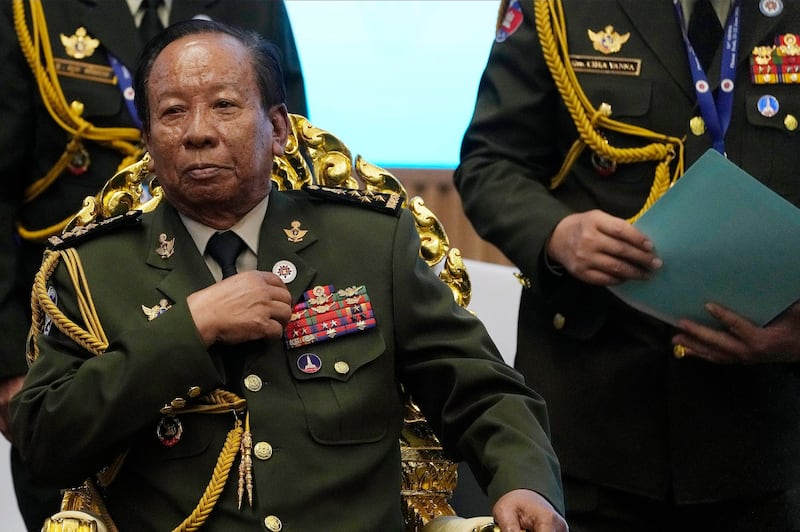Prime MinisterHun Sen said he will establish a park in every province to honor a policy that he says brought the remaining Khmer Rouge holdouts under government control in the 1990s, ending Cambodia’s decades-long civil war.
Dressed in military uniform, with five stars on his shoulder, Hun Sen told those gathered at the Ministry of National Defense on Tuesday that he was pleased with Defense Minister Tea Banh’s idea to build Techo Peace Parks in each of the country’s 24 provinces.
“Techo,” which means powerful or strong, and references an ancient Khmer warrior, is one of Hun Sen’s leadership honorifics.
“Each province should build it because it is a place of recreation for the people and it is not too expensive,” he said.
But critics said his idea is a waste of national money. The parks would be used for Hun Sen’s personal political gain just before the national election on July 23, said Chea You Horn, the president of the Khmer Association of Victoria in Australia.
“Now Hun Sen uses the word peace to arrest and put people in prison,” he said.

Bloody history
Hun Sen said he first introduced the “win-win” policy to co-opt the Khmer Rouge in 1987. The initiative allowed defecting Khmer Rouge cadres to keep their land and to join the government’s armed forces in return.
Other factors contributed to the end of Khmer Rouge, including the 1991 Paris Peace Accord which led to the 1993 U.N.-sponsored election.
The ultra-Maoist Khmer Rouge ruled Cambodia from 1975 to 1979, killing some 1.7 million Cambodians through starvation, overwork or execution in a bid to create an agrarian utopia. They were finally removed from power by Vietnam, which invaded Cambodia in 1979.
Hun Sen, a former Khmer Rouge fighter who fled to Vietnam in 1977, took part in the invasion and first took office as prime minister in 1985.
The Khmer Rouge continued fighting from camps along the Thai border during the 1980s. They again took up arms in 1992, the year after the peace accord was signed. But by 1999, all members and leaders had surrendered or been captured.
The national budget
Tea Banh, the defense minister, said the parks will help Cambodian people remember and appreciate Hun Sen’s work to end the fighting.
Chea You Horn noted, however, that many other political parties participated in the 1993 elections and also helped bring peace to the country.
If the government wants to use the national budget to build such a large project, it should be widely debated in the National Assembly, Candlelight Party Vice President Rong Chhun said.
Recent large government spending plans haven't gone through debate because the Assembly is controlled by one-party, he said.
"If we look at the law, we have to go through a debate to find a consensus," he said.
He added the country already has an Independence Monument in Phnom Penh – built in 1958 to commemorate independence from the French – and doesn’t need another monument.
The Victory Monument, built in 2018 to mark the end of the civil war, cost $12 million on an 8-hectare site in Chroy Changvar district near Phnom Penh. Hun Sen’s government has also built monuments in the provinces to commemorate the Vietnamese soldiers who helped defeat the Khmer Rouge.
Translated by Yun Samean. Edited by Matt Reed and Malcolm Foster.
